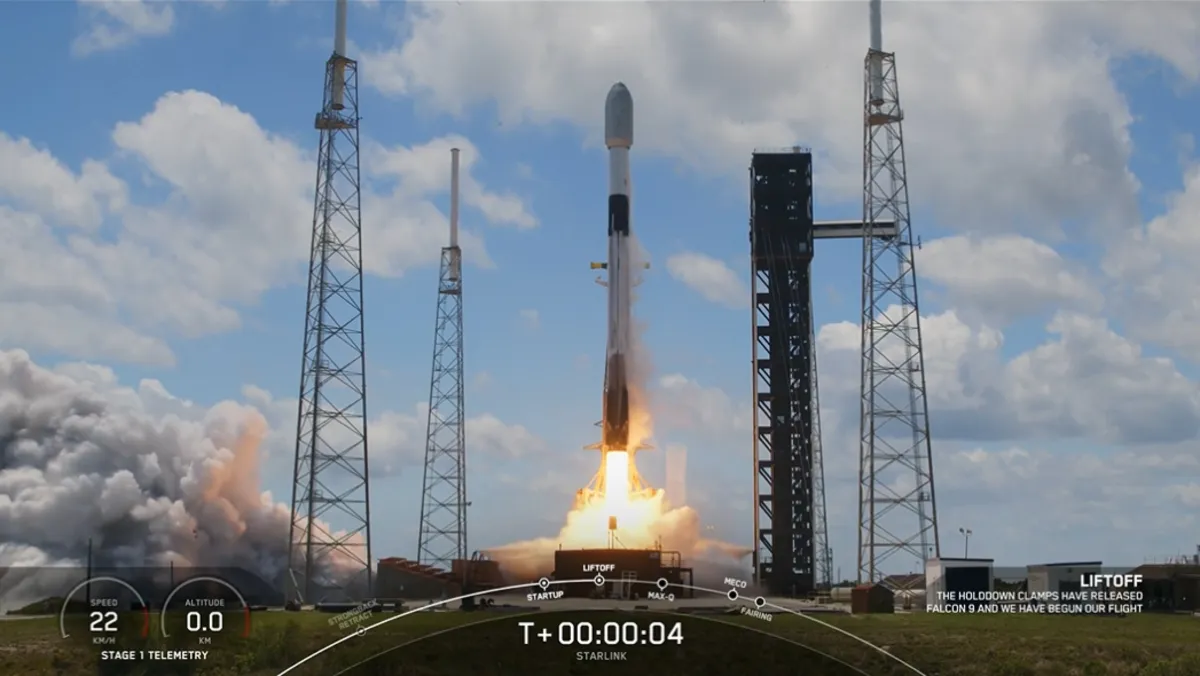
In a significant milestone for SpaceX, mission operators at Cape Canaveral experienced a late lunch today due to the mid-day launch of the latest stack of Starlink satellites. The Falcon 9 rocket launched the Starlink 6-67 mission from Cape Canaveral Space Force Station in Florida at precisely 12:38 p.m. EDT (1638 GMT). The launch took place under a stunning blue sky, marking another successful operation for the growing Starlink constellation.
The Falcon 9 rocket lifted off with a payload of 28 wireless internet satellites destined for low Earth orbit (LEO). This mission is particularly noteworthy as it is the fourth launch for the booster designated B1090, which has also been instrumental in previous missions, including SES' O3b mPOWER-E mission, NASA's Crew-10 astronaut flight, and the Bandwagon-3 rideshare mission that occurred last month.
Approximately 2.5 minutes into the flight, B1090's nine Merlin engines performed a cutoff, leading to a rapid stage separation. The Falcon 9's upper stage continued its journey with the Starlink payload while the booster prepared for its descent. About 8.5 minutes post-liftoff, B1090 successfully landed on SpaceX's drone ship, A Shortfall of Gravitats, which was stationed in the Atlantic Ocean, showcasing SpaceX's commitment to reusability and sustainability in space travel.
The 28 Starlink satellites are scheduled to be released from the rocket's payload adapter approximately one hour after launch. Following their deployment, each satellite will spend several days maneuvering into their designated orbits within the expansive Starlink megaconstellation. SpaceX's Starlink network is rapidly growing, boasting over 7,000 operational satellites that collectively create a lattice of connectivity that blankets nearly the entire planet, with the exception of the poles.
Starlink provides users with high-speed internet access from virtually anywhere, as long as they can position their Starlink receiver towards the sky. This innovative solution is particularly beneficial for those in remote locations, further enhancing global connectivity and bridging the digital divide.
As SpaceX continues to expand its Starlink network, the impact on global internet services is becoming increasingly significant, promising reliable connectivity for users around the world.